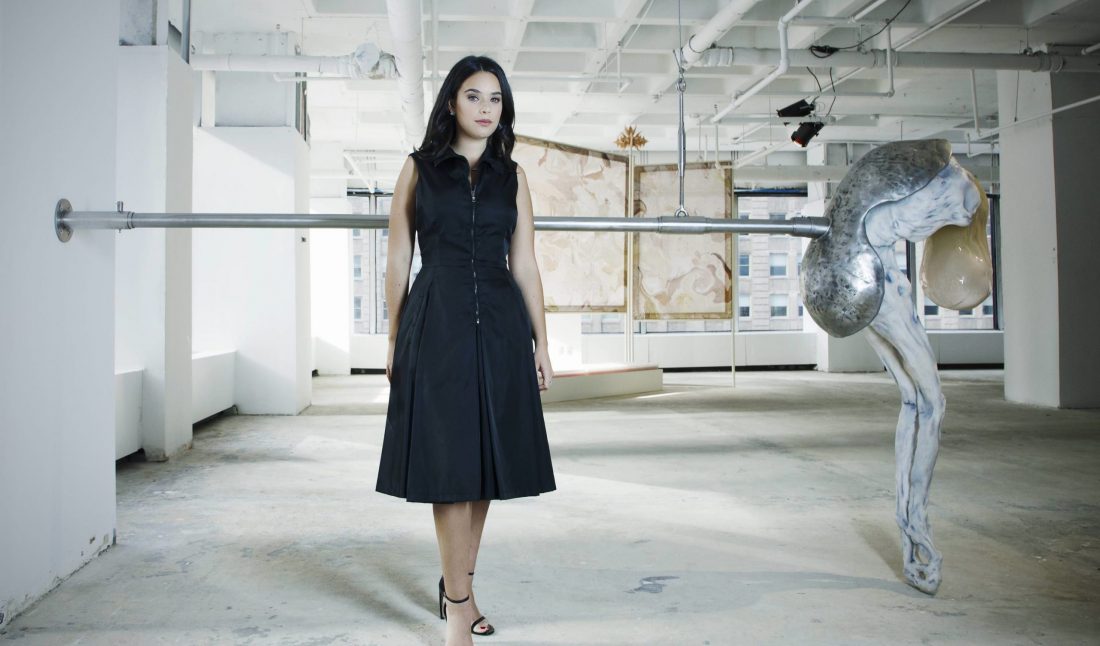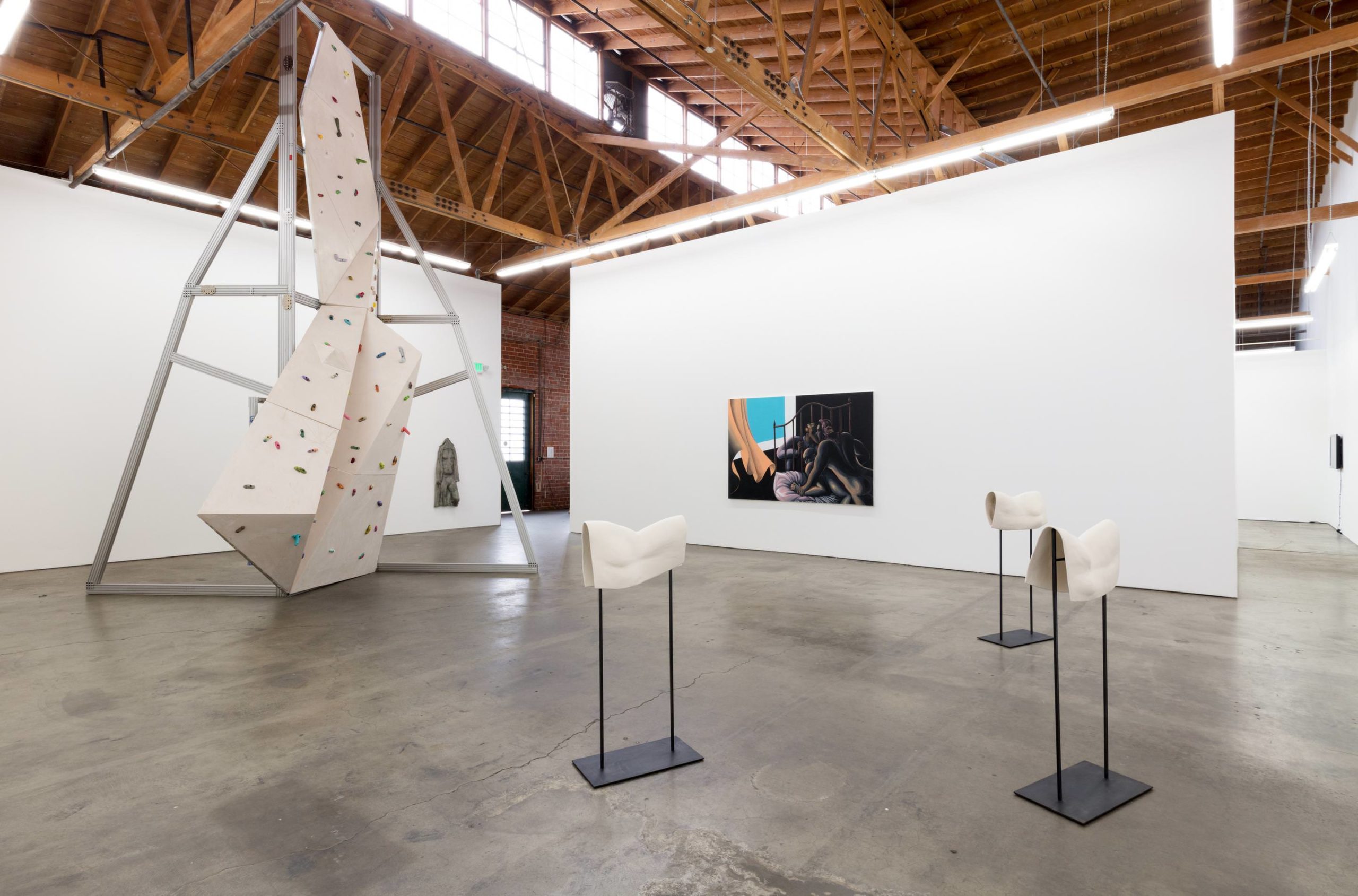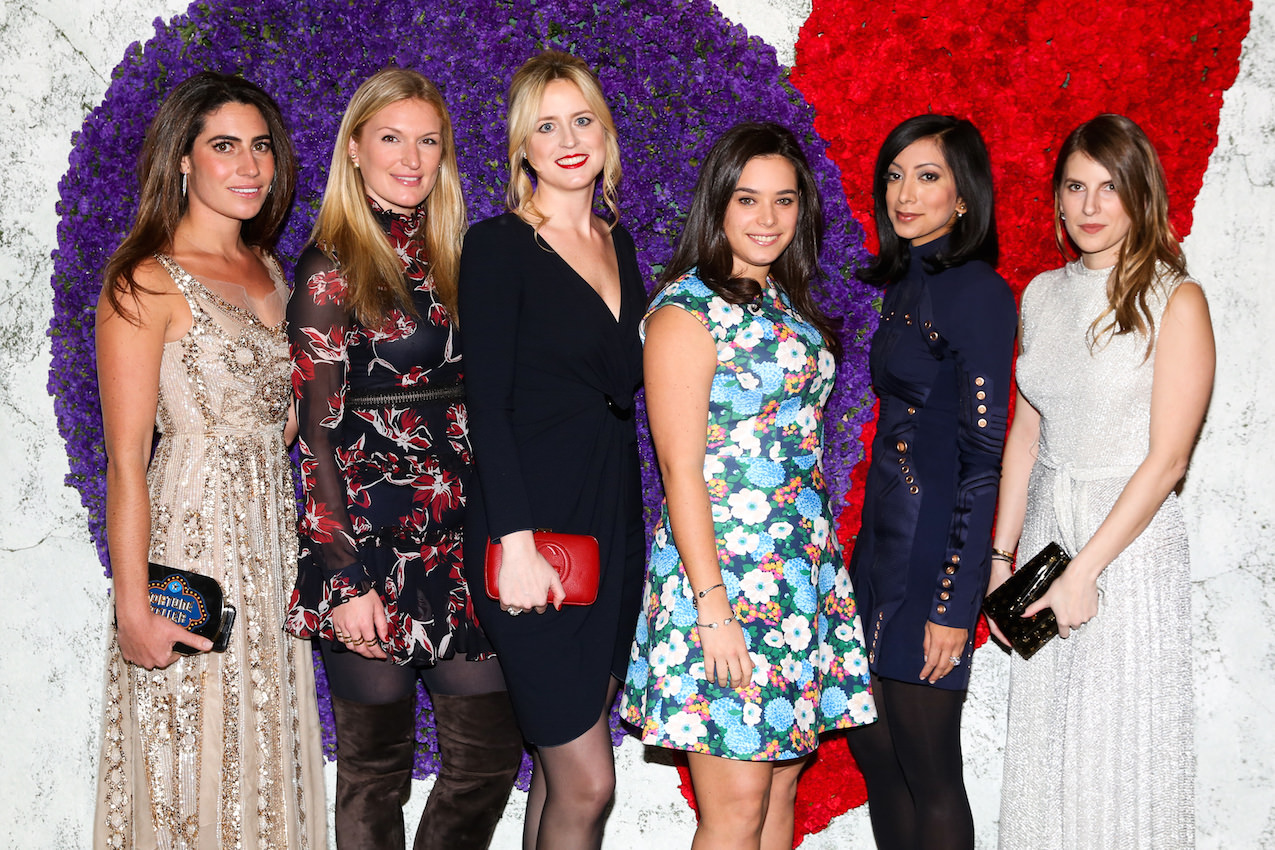Tiffany Zabludowicz grew up with the Zabludowicz Collection, which was founded by her parents Anita and Poju Zabludowicz in 1994, just two years after Tiffany was born. She wasn’t born into a home with a heavy history of collecting—the art on her walls expanded over time as she aged. That created for her a very particular relationship with contemporary art. She saw firsthand how her parents engaged with and supported the artists of their time. It was only natural that she would do the same.
She began collecting at 16, with editions, prints, and photographs. At 18 she bought her first painting, by Garth Weiser. She also found herself interested in art history, naturally, and after graduating from Brown went on to curate shows in London, New York, Miami, Las Vegas, and Puerto Rico. As chair of the Guggenheim’s Young Collector’s Council and founding member of the New Museum’s Artemis Council, she currently runs Times Square Space, a unique exhibition site in the heart of Times Square at 1500 Broadway. There, in an office building owned by Tamares Real Estate, she mounts shows and residencies in in empty offices in the interim between a tenant moving out and a new one moving in.
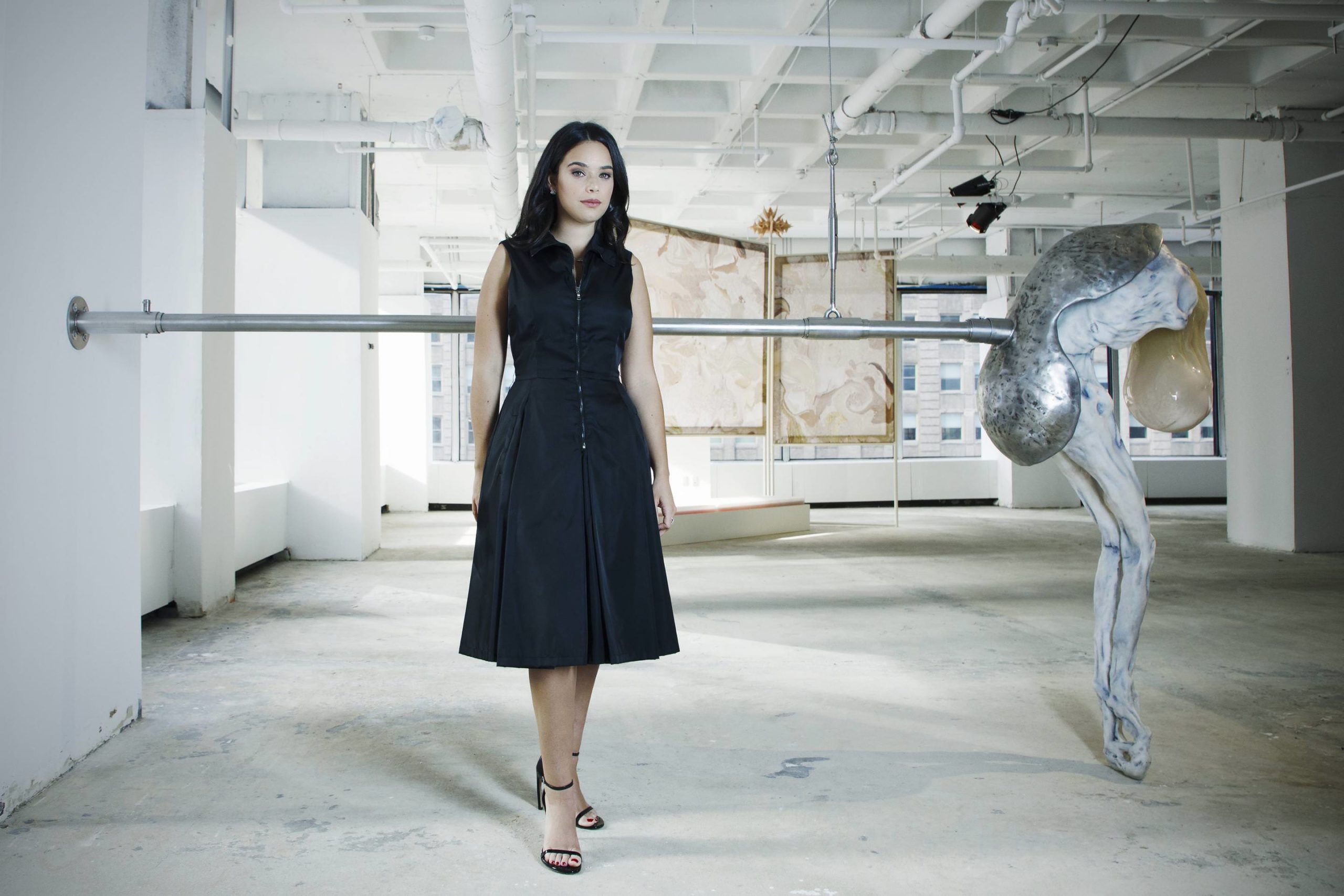 Portrait by Steve Benisty. (Behind her, “Through the hum of black velvet sleep” by Ivana Bašić and “Digital Desert II” by Marguerite Humeau.
Portrait by Steve Benisty. (Behind her, “Through the hum of black velvet sleep” by Ivana Bašić and “Digital Desert II” by Marguerite Humeau.
This winter, Times Square Space hosted “Stray,” a group exhibition of sculpture by Kelly Akashi, Ivana Bašić, Hayden Dunham, Marguerite Humeau, and Pamela Rosenkranz, located on the 14th floor with near-panoramic views of the neighborhood’s skyscrapers, pedestrians, traffic, and flashing billboards. And on view now through June 21 is “Tesseract,” a solo exhibition by Signe Pierce.
In early January we met with Zabludowicz there to learn more about her commitment to supporting emerging artists of her generation.
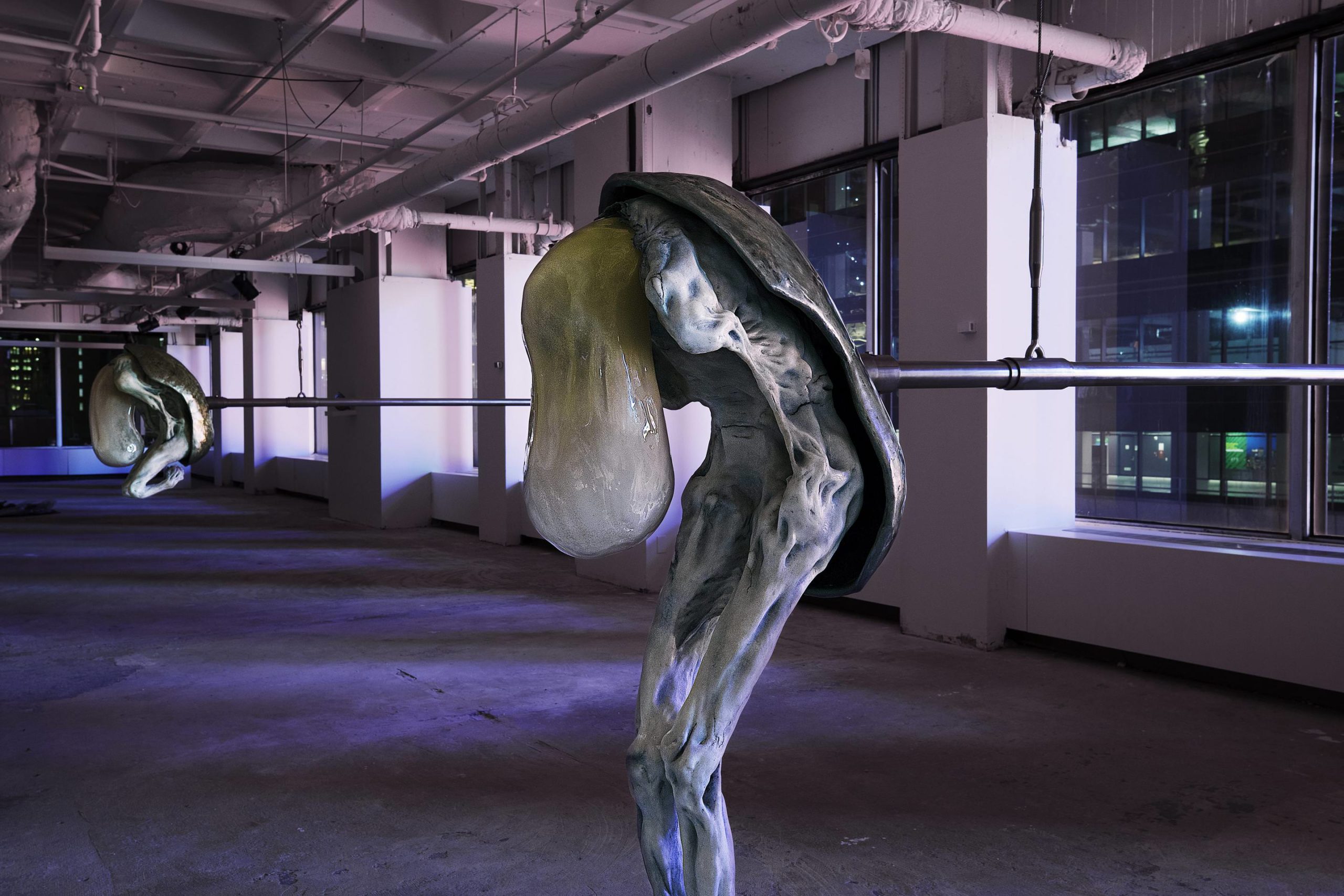 Installation views of “STRAY” (November 28, 2017—February 7, 2018) at Times Square Space, photo by Steve Benisty. Pictured, “Through the hum of black velvet sleep” by Ivana Bašić.
Installation views of “STRAY” (November 28, 2017—February 7, 2018) at Times Square Space, photo by Steve Benisty. Pictured, “Through the hum of black velvet sleep” by Ivana Bašić.
WHITEWALL: What was your vision for Times Square Space? What are the challenges and benefits of a space like this?
TIFFANY ZABLUDOWICZ: This actual space we are sitting in now, this office space, is temporary. I was given it for six months. That ends in February and then I move to another space within the same building. That’s the concept, when an office moves out, we’ll move in with an exhibition.
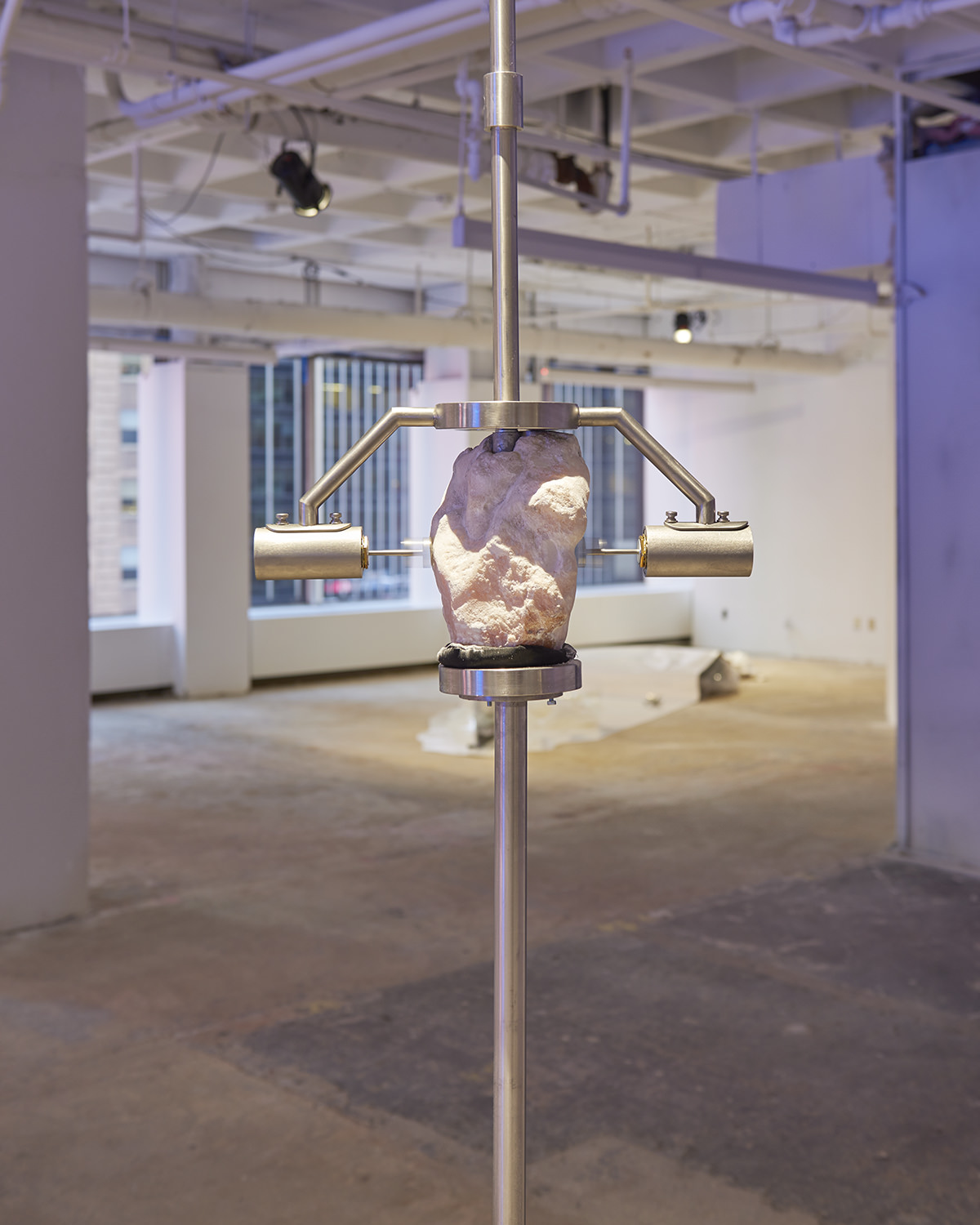 Installation views of “STRAY” (November 28, 2017—February 7, 2018) at Times Square Space, photo by Kyle Knodell. Pictured, “A thousand years ago 10 seconds of
breath were 40 grams of dust” by Ivana Bašić.
Installation views of “STRAY” (November 28, 2017—February 7, 2018) at Times Square Space, photo by Kyle Knodell. Pictured, “A thousand years ago 10 seconds of
breath were 40 grams of dust” by Ivana Bašić.
For me, it’s great because I have a lot of ideas that I want to produce and I get to be a bit reactionary. I can go around the Lower East Side, look at art, look in Brooklyn and see what’s happening and reflect all that in this space.
WW: As opposed to having a permanent space where you are a slave to the calendar . . .
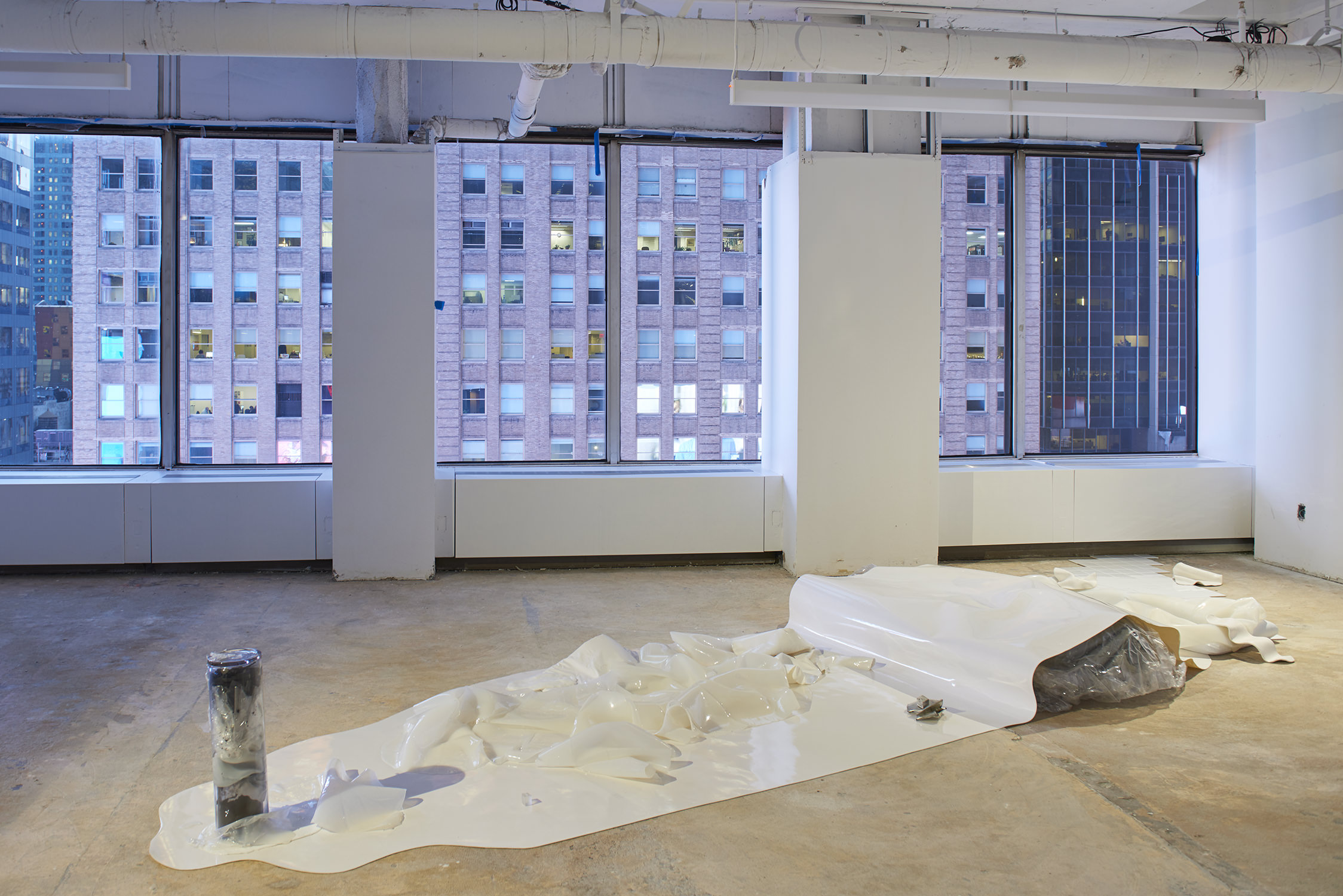 Installation views of “STRAY” (November 28, 2017—February 7, 2018) at Times Square Space, photo by Kyle Knodell. Pictured, Hayden Dunham’s “GEL.”
Installation views of “STRAY” (November 28, 2017—February 7, 2018) at Times Square Space, photo by Kyle Knodell. Pictured, Hayden Dunham’s “GEL.”
TZ: Yeah. It is also really nice because it allows for me to do other projects. From the outset of this space, it felt important to put artists here so that they could be influenced by the terrain. Times Square is totally inspirational. It feels like you are literally in the Internet. Also, you feel like you’re really in America because so many different types of people come through here. It’s like you see the whole country in this one little square. It’s the heart of New York City. It often informs artists’ practices in unexpected and exciting ways. Being able to participate in their responses is also a privilege and a wonderful experience.
WW: You are looking at emerging artists mostly. Has that always been your focus as a curator?
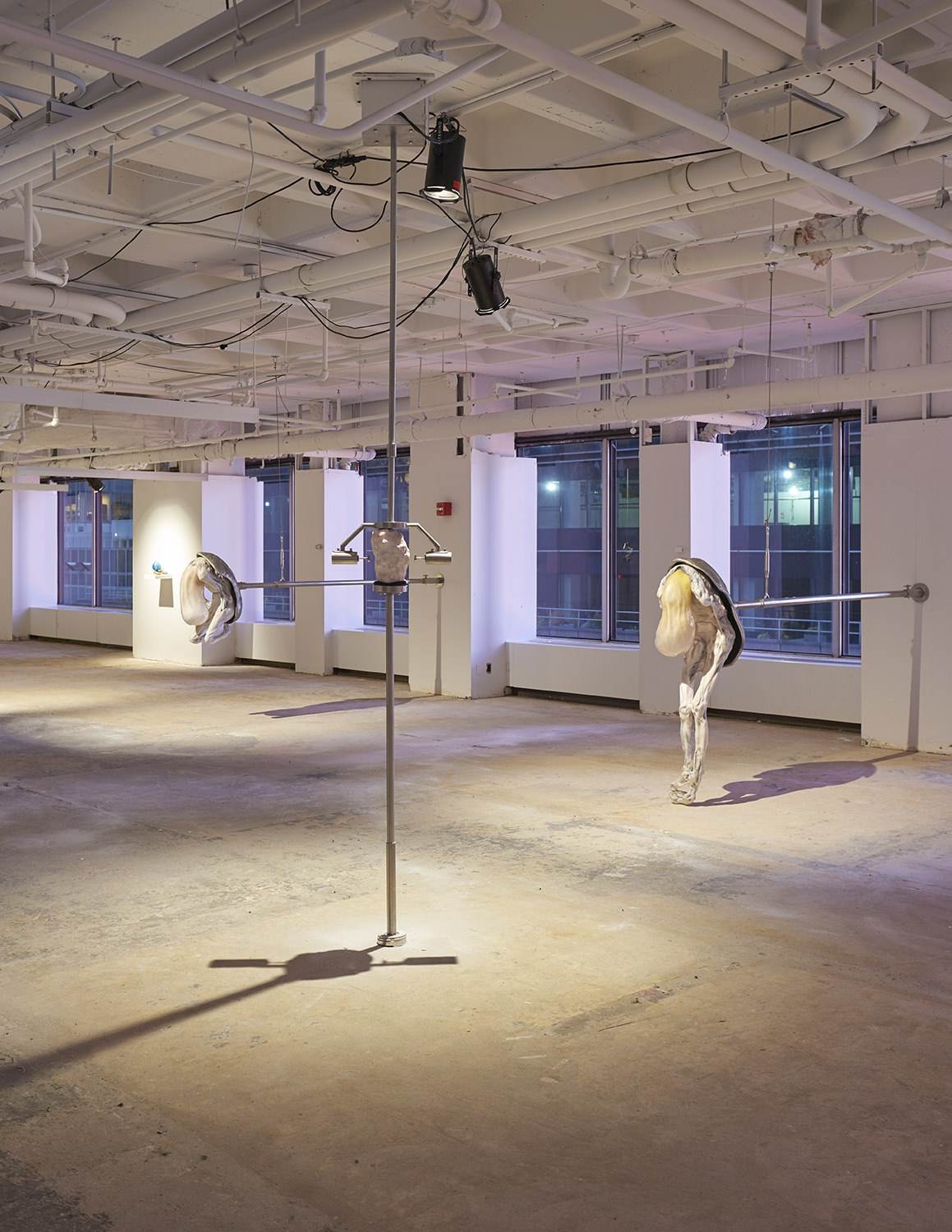 Installation views of “STRAY” (November 28, 2017—February 7, 2018) at Times Square Space, photo by Kyle Knodell. Pictured, “A thousand years ago 10 seconds of
breath were 40 grams of dust” and “Through the hum of black velvet sleep” by Ivana Bašić.
Installation views of “STRAY” (November 28, 2017—February 7, 2018) at Times Square Space, photo by Kyle Knodell. Pictured, “A thousand years ago 10 seconds of
breath were 40 grams of dust” and “Through the hum of black velvet sleep” by Ivana Bašić.
TZ: Pretty much. One thing that’s very important to me is to support artists of my generation and to work with artists of my generation. That I understood from a young age. Obviously, sometimes I’m interested in other artists who have emerged, but working with emerging artists allows you to actually make an impact on the art of your time. You get to have conversations with wonderful people who are around your age and making art. That’s the best.
WW: You grew up in a family that famously collects. What made you want to pursue a career in the arts?
 Installation view of “Signe Pierce: Tesseract.”
Installation view of “Signe Pierce: Tesseract.”
TZ: Well, I actually grew up with the collection. The collections started in 1994, and I was born in 1992. So we’re around the same age [laughs]. And that’s nice because when I was really young it wasn’t too in my face. It was very organic, and as I got older my mum got more into it. And I got into it naturally as well.
When I started studying art history in high school, I had a great teacher who would take us to museums around London and the U.K. And then we would discuss what we had seen in classes. Having that in-depth analysis finally to overlay what I was seeing made me obsessed with art, and I totally caught the art bug. Once you’ve caught the art bug, it’s inevitable. You’re stuck. You can’t really do anything else.
 Installation view of “Signe Pierce: Tesseract.”
Installation view of “Signe Pierce: Tesseract.”
WW: When did you start collecting what you were interested in?
TZ: When I was 16 I started collecting editions and prints and photographs. I would go to every art fair with my mum, just tag along. And eventually she started asking me what I thought, which was really exciting, and I would give my input. Then I started wanting to do what she did, like any daughter, but the access point when you are 16 is not a full-fledged painting, it’s little photographs or prints and editions. When I was 18 I acquired my first proper painting when I had been tried and tested.
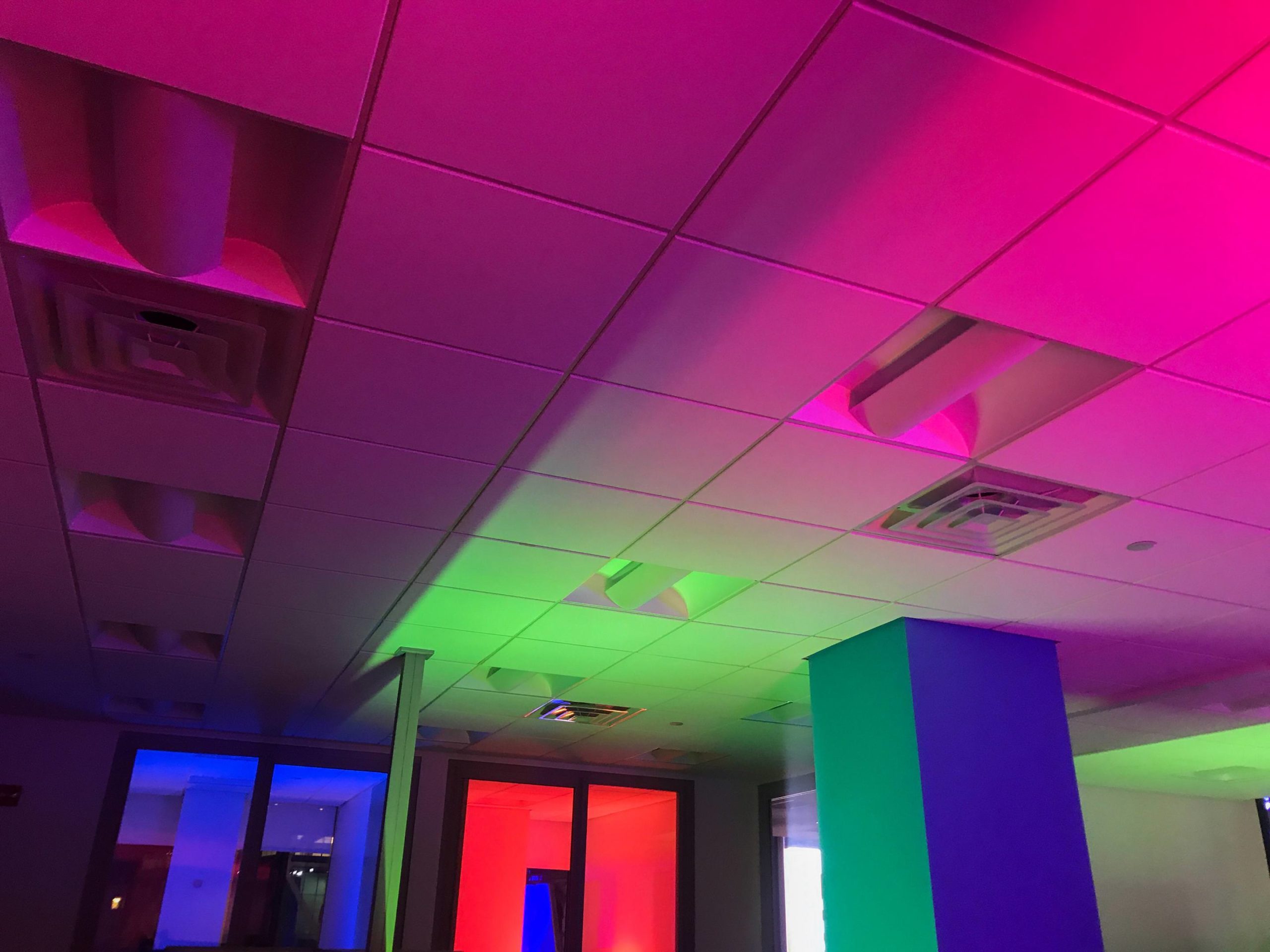 Installation view of “Signe Pierce: Tesseract.”
Installation view of “Signe Pierce: Tesseract.”
WW: What was that painting?
TZ: It was by Garth Weiser from Casey Kaplan gallery. The prints and editions are, of course, still part of the collection, and I take them very seriously. To me, they are equally valuable.
WW: When you’re at a fair, when you’re looking at art, do you have both hats on—your curator’s hat and your collector’s hat?
TZ: They are separate, in a way, although they do flow together at first. When I’m at fairs, usually I have my collector’s hat on for the first day. And then the collecting is done and I put my curatorial hat on and go and investigate. They flow together; they totally work in tandem.
WW: On the curatorial side, where else are you looking?
TZ: Everywhere. I think social media is really useful, actually. I think it’s become increasingly useful lately, with Instagram and understanding all the connections between artists and galleries. Or like last night I was on a YouTube binge: I was watching art videos and let it run and ended up watching a video about Jordan Casteel. I hadn’t really looked at her work before. You never know what you are going to discover, where you are going to find new artists. It’s just about being open. A great way for me, I’ve found, is asking artists. If there’s an artist I respect, I ask them if there are artists they are looking at. Usually, artists know where to look better than everyone else.
WW: How would you describe your role as curator?
TZ: I’m still learning what that role is. I think the role of a curator is caretaker almost. That’s how Hans Ulrich Obrist defines it, and so does Klaus Biesenbach. They are curators I admire. I think that means that it’s something that you have; it’s taking care of the art you collect and actually, physically, maintaining it, making sure it gets seen properly, making sure it’s contextualized properly.
It also means taking care of the artists you are curating, which is why I really like curating artists of my generation, because then I can work with them to help propel them. Whereas if I’m working with older artists, what do they need from me? There’s nothing I can help them with. It also means taking care of the world and being aware and thoughtful about what’s happening in the world and always trying to push culture forward. I haven’t achieved that fully yet, but that’s what I’m working on.
WW: Do you find there’s a difference between the way your peers collect and your parents’ contemporaries?
TZ: Everybody has a different style. I’m 25, so people are really defining their directions now. I’m different because I work with my family’s collection. So people who are striking out on their own might not be where I am. They are doing different things for obvious reasons.
When I first started coming to New York, I was as 18, and there were like five of us running around who were my age. We all became close and are still close, even though we’ve gone off in different ways. Now there are so many and it’s wonderful. People who are working in art now are probably going to do it for the rest of their lives. Knowing that makes your friendships much richer. The people I’m surrounded by are really smart and really engaged. I think that my generation is going to be really interesting. There’s a strength, in general. I think there are some really good players coming up. Things are changing in a good way. There’s a lot of openness in reaction to the times. There’s a shift.
WW: What advice would you give to emerging collectors?
TZ: Editions are a really wonderful place to start. You can get your feet wet without too much of a financial investment, and there are some really excellent editions at the moment. Then I would say be focused. See a lot. Go see a lot of art. Pick artists you love, follow them and support them and stick with them. Make sure you are playing the long game. That’s the best way to do it.
Find a gallerist you trust. Gallerists can really be the best advisers. Build a close relationship and let them guide you. Have a budget. Even if you buy one work a year, if you’re a young collector, that’s at least 50 works. That’s a collection. There are ways of doing it that are a bit more affordable. Just be cautious with storage costs, and shipping and installation. They can sneak up on you!
But I think go for it. Do it! Collect art.






